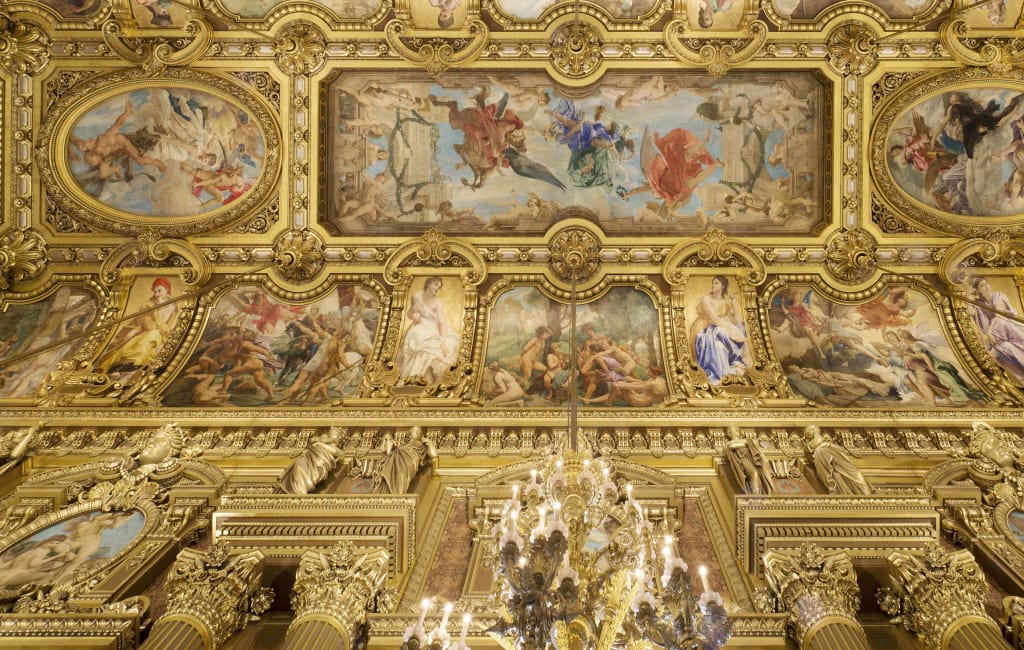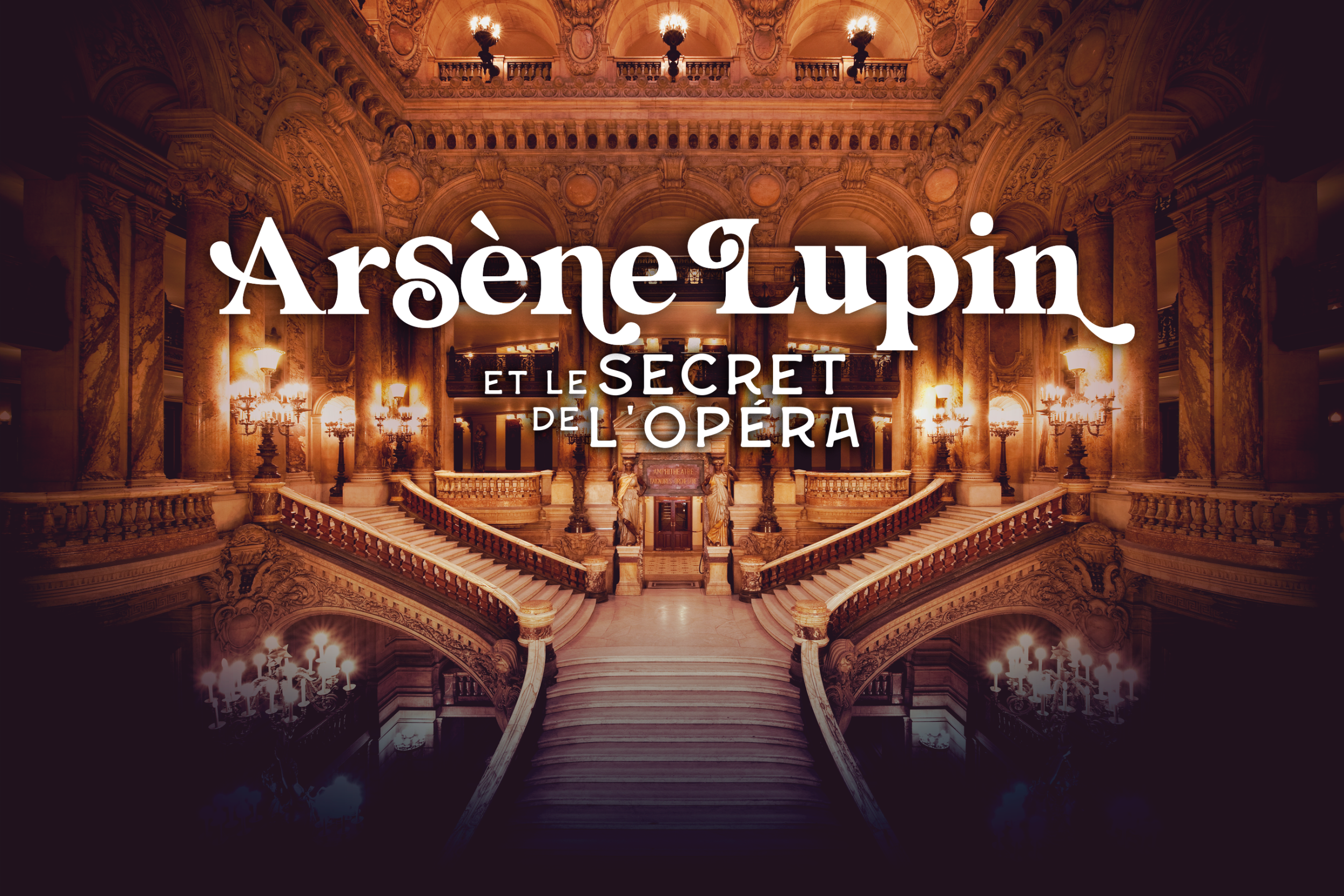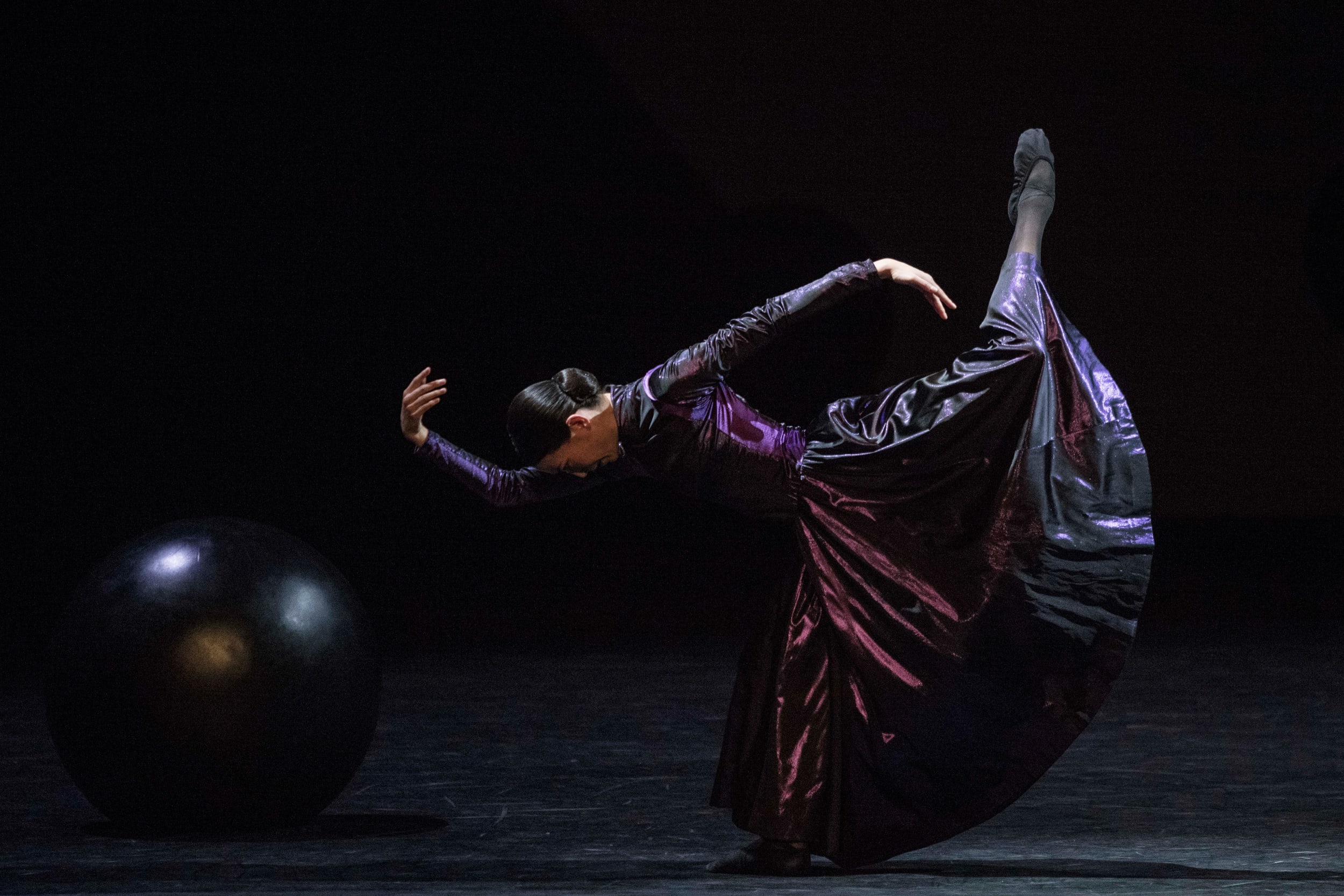Prices
Show / Event
Venue
Experience
No result. Clear filters or select a larger calendar range.
No show today.
For reasons related to theater activity, the auditorium is regularly inaccessible to visitors and some areas may be closed.
Due to the number of visitors, online booking only guarantees entry to the Palais Garnier.
Sunday 30th March : no tour ticket sales at the ticket office
Calendar of occasional closures
| Mon | Tue | Wed | Thu | Fri | Sat | Sun |
|---|---|---|---|---|---|---|
- Closed in the morning
- Closed in the afternoon
- Closed all day
- Restricted access*
Click on a date to see detailed schedules
*Restricted access: as some areas are closed, the reduced rate applies to individual sel-guided visitors over 25 years old. This rate does not apply if the auditorium is closed.
© Marc Walter / OnP
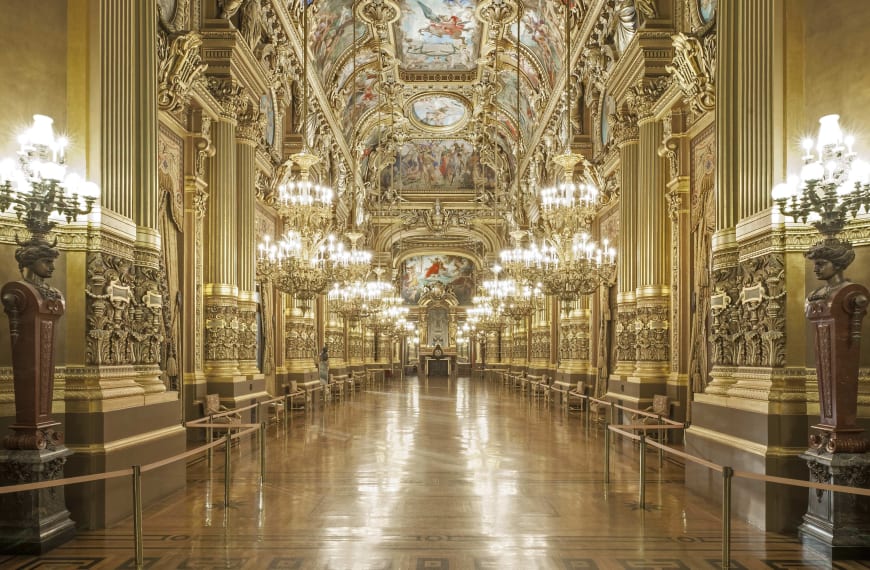
SELF-GUIDED TOUR
© Charles-Henry Bédué / OnP
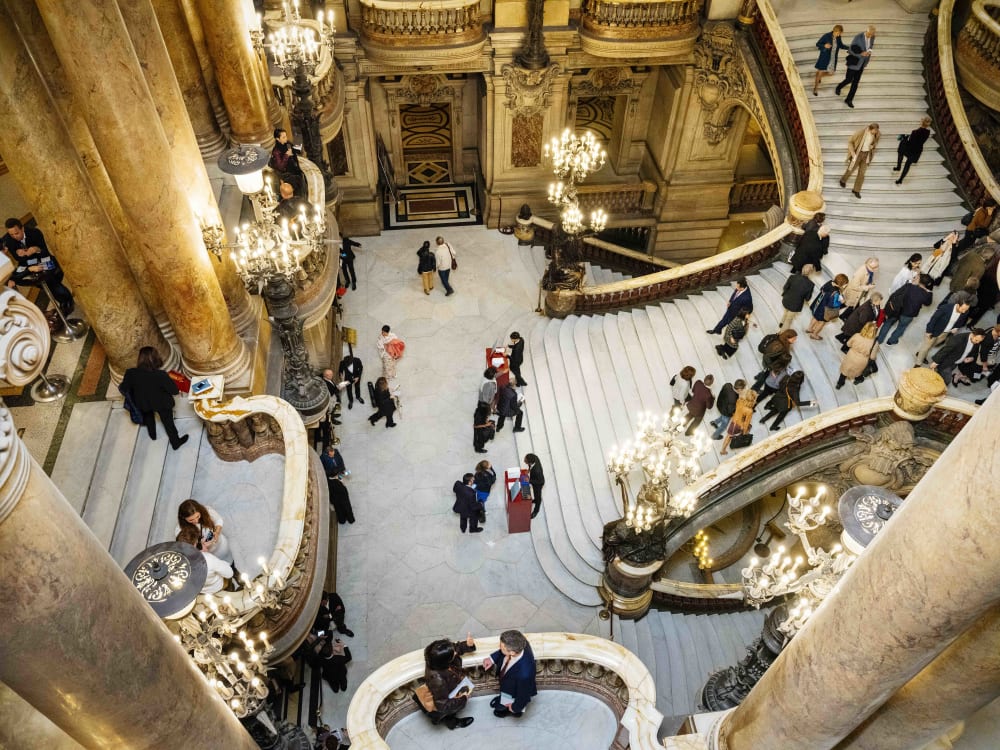
GUIDED TOURS
At the moment
Virtual tour
In partnership with the Google Cultural Institute, discover the theatre and its masterpieces as if you were actually there.
Chidren games experience
A funny document for the children to explore the Palais Garnier and discover its history, while playing a game.
Devialet
At the heart of the Palais Garnier, the Devialet acoustic discovery room showcases wireless speakers, among which the "Gold Phantom Opéra de Paris".
Informations: devialet.com , +33 9 63 53 20 79
To discover
1/8
BASSIN DE LA PITHYE, GRAND ESCALIER
Beyond the Rotonde des Abonnés, the Bassin de la Pythia leads to the Grand Escalier with its magnificent thirty-meter-high vault. Built of marble of various colours, it is home to the double staircase leading to the foyers and the various floors of the theatre. At the bottom of the stairs, a true theatre within the theatre, two female allegories holding torches greet spectators.
SALON DU GLACIER, FOYER
At the end of a long gallery is the Rotunde du Glacier, a fresh and bright rotunda with a ceiling painted by Clairin (1843-1919) and featuring dancing bacchantes and fauna, along with tapestries illustrating different refreshments as well as fishing and hunting. Completed after the opening of the Palais Garnier, this salon evokes the aesthetic of the Belle Époque.
The vault of the Avant-Foyer is covered with mosaics of shimmering colours on a gold background. The view of the Grand Staircase is spectacular. The play of light between mirrors and windows in the Grand Foyer further accentuates the latter's vast dimensions. The ceiling painted by Paul Baudry (1828-1886) features themes from the history of music.
The lyre is the main element: it reigns over all the decorative vocabulary, be it on capitals, heating grids or doorknobs. A copy of Charles Garnier's bust by the sculptor Carpeaux (1827-1875) is located in the centre of the foyer, near a window looking down the Avenue de l'Opera towards the Louvre. The view can be enjoyed even more from the loggia. The Salons du Soleil et de la Lune offer a symbolic and poetic transition to the other areas.
library-museum of the opera
The collections of the Library-Museum of the Opera (National Library of France) conserve three centuries of the theatre's history. The museum gallery houses a permanent exhibition of paintings, drawings, photographs and set models. After the fall of the Empire, the premises were never completed: in the staircase leading to the temporary exhibition hall, remain the massive stone blocks dating from 1870. Access to the reading room, located in the Rotunde de l'Empereur, is restricted to researchers.
GALERIE DE L'ORCHESTRE, GRAND VESTIBULE
The Galerie de l'Orchestre offers a last glance of the Palais Garnier and an audiovisual exhibition recounting its history. The Grand Vestibule, watched over by the statues of the four composers Rameau, Lully, Gluck and Handel, leads to the exit.
the auditorium
For reasons related to theater activity, the performance hall is regularly inaccessible to visitors.
In the tradition of Italian theatre, the horseshoe-shaped "French" auditorium, so-called for the way the seats are arranged according to their category, was designed for the audience to see and to be seen. Its metallic structure, hidden by marble, stucco, velvet and gilding, supports the weight of the 8-ton bronze and crystal chandelier with its 340 lights. The house curtain was created by theatrical painters Auguste Rube (1817-1899) and Philippe Chaperon (1823-1906), following Charles Garnier's instructions. The curtain was replaced by an identical one in both 1951 and 1996. The ceiling painted by Marc Chagall and commissioned by the Minister of Culture André Malraux was inaugurated on September 23, 1964.
Contact us
ACCESS
Entrance at the corner of Scribe and Auber streets
75009 Paris
Access to the Palais Garnier
Metro: Opéra station (lines 3, 7 and 8)
RER: Auber station (line A)
Bus: lines 20, 21, 27, 29, 32, 45, 52, 66, 68, 95
Car park: Q-Park Edouard VII - Rue Bruno Coquatrix 75009 Paris (in front of 23 Rue de Caumartin)
Reserve your parking space
CONTACTS
Individuals
+33 1 71 25 24 23 (0.35€/min) or on-site, at the desks or automatic terminals.
Guided tours
+33 (1) 89 16 83 02 (0.15€/min)
or reservation@manatour.fr
https://www.manatour.fr/opera
Prepare your visit
ACCESSIBILITY
The Palais Garnier offers a safe access to persons with reduced mobility, in wheelchair or with visual disabilities (except places for temporary exhibitions).
Information and Booking
+33 1 40 01 18 50 (from Monday to Friday, 10am to 1pm and 2pm to 5pm).
accessibilité@operadeparis.fr
ON-SITE SERVICES
Please note that the cloakrooms are not available for visitors.
The book and gift shop
From Monday to Sunday, from 10am to 7pm and until the end of performances; and from 10:30 am to 6 pm from 17th July to 30th August.
Access from street Havély or from the theatre public areas.
Information: +33 1 53 43 03 97
CoCo Restaurant
Open everyday from 7:30am to 2am (last service at 11pm).
1, place Jacques Rouché - 75009 Paris (at the right of the theatre façade).
Booking: +33 1 42 68 86 80
coco-paris.com
Visit also the Bastille Opera
The Paris Opera offers you the possibility to discover the backstage world of this modern theatre, whose dimensions are impressive, created in 1989 by Carlos Ott.
Immerse in the Paris Opera universe
Business Space
Back to top
